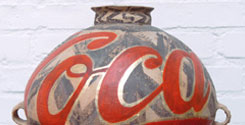
The Book of Jumbo
A new biography tells the back story of Tufts’ larger-than-life mascot
By Taylor McNeil
Jumbo is back. Not in the flesh, of course, but in the public eye with the publication this month of a new biography of Tufts’ favorite pachyderm. Paul Chambers’ Jumbo: This Being the True Story of the Greatest Elephant in the World (Steerforth Press) is at least the third full-length biography of the elephant born in eastern Sudan whose remains are safely at rest in a peanut butter jar at Tufts.
There certainly is pathos in his story. His mother killed by hunters, young Jumbo—the runt of his family—was hauled off to the Jardin des Plantes in Paris. He led an unhappy existence in cramped quarters there before being sold to the Royal Zoological Grounds in London in late June 1865. His zookeeper at Regent’s Park, Matthew Scott, was an eccentric who became as much his companion as his keeper, rarely venturing far from Jumbo for the rest of the elephant’s life.
No one knows how Jumbo came by his name, but when it was bestowed upon him in London, it didn’t mean big, gargantuan or the largest of its kind. Those associations came later, thanks to some clever marketing by P.T. Barnum. His name might have come from a slang phrase current in London, “my jumbo,” for a lowly looking person. Or, as Chambers suggests, perhaps it came from “Mumbo Jumbo,” a name given to certain West African holy men, as popularized by European explorers of the time. At any rate, the name stuck.
In 1882, his life took another unexpected turn: Barnum bought him for the circus for £2,000. That wasn’t chump change: it’s maybe $200,000 today, give or take. Jumbo resisted the change—it took mighty struggles and then trickery to get him into a crate and onto a ship to New York. He was greeted as an exemplar of his species, supposedly far larger than normal, though in fact he wasn’t—it was just another of Barnum’s publicity ploys.
The circus life was hard, but Jumbo had a profitable four seasons for Barnum before the tragic night of September 15, 1885, when he was run over by a freight train in Ontario. The rest, as most Tufts Jumbos already know, is history. Stuffed, he came to Medford in 1889, housed in a museum bearing Barnum’s name. (Barnum was a trustee of what was then known as Tufts College.) Jumbo became the Tufts mascot and a good-luck symbol for students through the years.
In 1975, Barnum Hall burned down, Jumbo and all. A staffer ran in to scoop up some of the ashes in a peanut butter jar, the only remains we still have. (His tail is in the Tufts Archives, but that’s another story.) Having been the mascot, it was felt Jumbo rightly belonged to the Athletics Department; the ashes are now handed down during the changing of the guard in the Athletic Director’s office.
And Jumbo’s legacy? He’s given us a nifty big word in the English dictionary, proved an attraction to thousands of Tufts students and has now inspired his third biography. Not bad for the runt of the pack.
Taylor McNeil can be reached at taylor.mcneil@tufts.edu.


